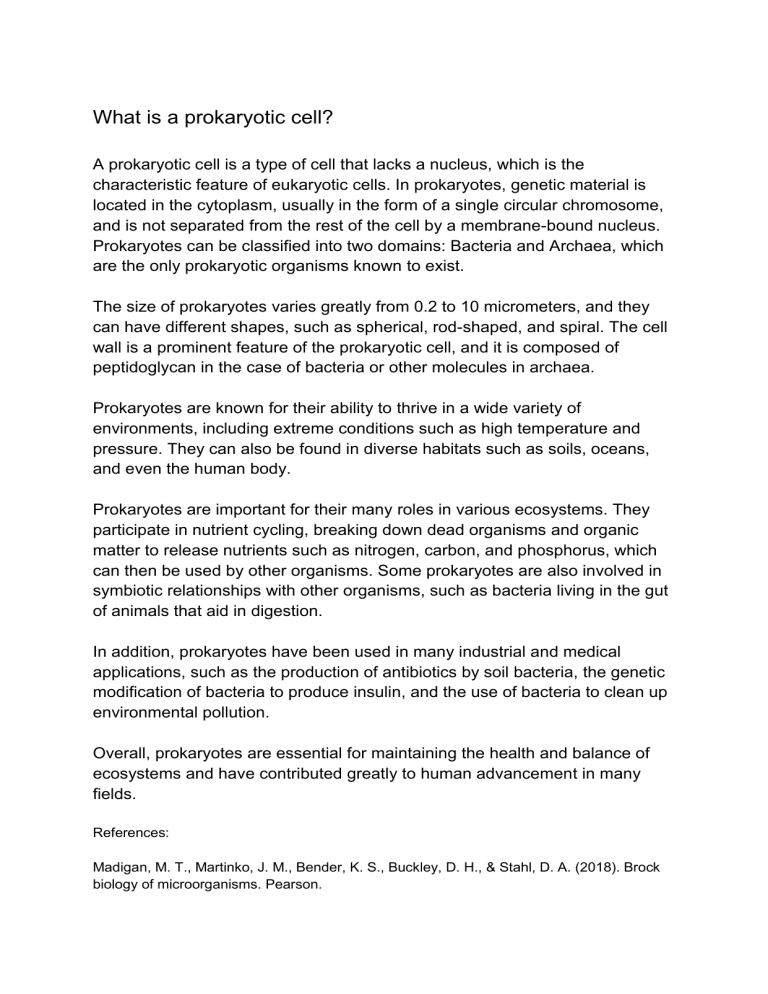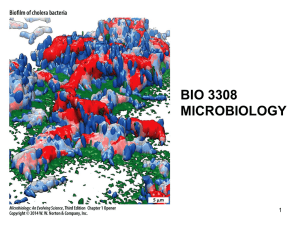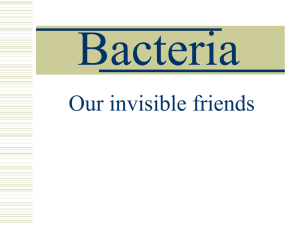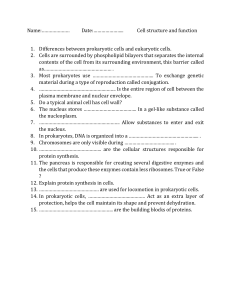
What is a prokaryotic cell? A prokaryotic cell is a type of cell that lacks a nucleus, which is the characteristic feature of eukaryotic cells. In prokaryotes, genetic material is located in the cytoplasm, usually in the form of a single circular chromosome, and is not separated from the rest of the cell by a membrane-bound nucleus. Prokaryotes can be classified into two domains: Bacteria and Archaea, which are the only prokaryotic organisms known to exist. The size of prokaryotes varies greatly from 0.2 to 10 micrometers, and they can have different shapes, such as spherical, rod-shaped, and spiral. The cell wall is a prominent feature of the prokaryotic cell, and it is composed of peptidoglycan in the case of bacteria or other molecules in archaea. Prokaryotes are known for their ability to thrive in a wide variety of environments, including extreme conditions such as high temperature and pressure. They can also be found in diverse habitats such as soils, oceans, and even the human body. Prokaryotes are important for their many roles in various ecosystems. They participate in nutrient cycling, breaking down dead organisms and organic matter to release nutrients such as nitrogen, carbon, and phosphorus, which can then be used by other organisms. Some prokaryotes are also involved in symbiotic relationships with other organisms, such as bacteria living in the gut of animals that aid in digestion. In addition, prokaryotes have been used in many industrial and medical applications, such as the production of antibiotics by soil bacteria, the genetic modification of bacteria to produce insulin, and the use of bacteria to clean up environmental pollution. Overall, prokaryotes are essential for maintaining the health and balance of ecosystems and have contributed greatly to human advancement in many fields. References: Madigan, M. T., Martinko, J. M., Bender, K. S., Buckley, D. H., & Stahl, D. A. (2018). Brock biology of microorganisms. Pearson. Campbell, N. A., & Reece, J. B. (2005). Biology (Vol. 8). Pearson Prentice Hall.



